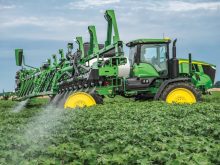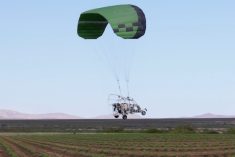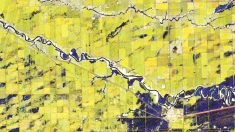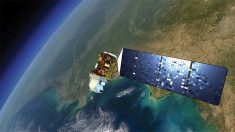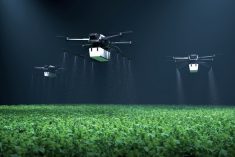Although huge strides have been made with technology in the agricultural industry with field mapping, GPS and even autonomous implements, other areas of farming have gone unchanged for far too long. With an increase in ag-focused Silicon Valley-style start-up companies popping up in Western Canada and the U.S. new technologies are finding their way onto farms.
In the past, new technologies presented to farmers were extremely complex and promised to change the way we farm forever. Unfortunately, a lot of these gadgets proved too difficult to use on a day-to-day basis and did not follow through on the promises they made. Ashwin Madgavkar, CEO of Ceres Imaging said, “There are so many agricultural technology products that overpromise and underdeliver. They also had very little understanding of growers’ unique needs. As a result, many farmers have been left with a bad taste in their mouths.”
Read Also

Cancer agency reclassifies another herbicide ‘probably carcinogenic’
The WHO’s cancer research agency has now put atrazine, a herbicide well known to corn growers, in the same potential-hazard category where the agency put glyphosate.
Information You Can Use
Ceres Imaging is an aerial spectral imaging company. They use low flying airplanes equipped with specialized imaging technology to detect irrigation, pest, fertility, and disease issues weeks before the problems would be noticeable by the naked eye. The technology can be used for any crop and the real-time delivery of the information can be instantly given to the farmer.
Madgavkar says, “We have refined algorithms, together with artificial intelligence and analytics, to show important trends during critical points of the growing season. Multi-year trends allow farmers to adapt and optimize their organization in the face of increased market pressures.” But farmers do not need to worry about the advanced mathematics as all of the date is transferred to an easy-to-use and understand application for phone, tablet or computer.
Data collection is critical to making informed and accurate choices on the farm. Farmers who have utilized Ceres Imaging have seen a consistent four to six times return on their input investment.
A Network of Ducks
A large hurdle for introducing new technologies to the farm has been the limitation of Wi-Fi and internet strength out in the fields. How can data collection and measurements be done out in the field if there is no internet strength? The answer: Ducks. No, not that kind of duck.
Will Topping, an electrical engineer, founded Brand x Technologies in Saskatoon, Saskatchewan. Brand x Technologies prides itself on creating simple solutions to complex problems.
Topping uses metaphors to describe what his Ducks, do for a farmer, “Think of something as simple as measuring the moisture and temperature in a grain bin. We install a Duck, which is a small sensor, and program it to complete a simple action and report it. Wake up, measure, quack, go to bed, and repeat.” The data is collected and is transferred to a simple app that a farmer can access at any time.
Instead of Wi-Fi or radio frequency, the Ducks work off of Long Range Low Power frequency (LoRa). LoRa gateways allow for very low data messages to be sent an extremely long distance. Essentially, they facilitate a smaller amount of data than a text message.
LoRa gateways were developed in 2008 and thousands are currently used in many major cities, but is only just beginning to make its way to Western Canada. Topping says there are only two gateways in Saskatchewan, one owned by himself and one owned by a hops farmer in northern Saskatchewan who uses them to measure the humidity of his crops.
Topping expects that LoRa gateways will be quickly popping up across Saskatchewan, so his Ducks will be quacking across Western Canada very soon.



